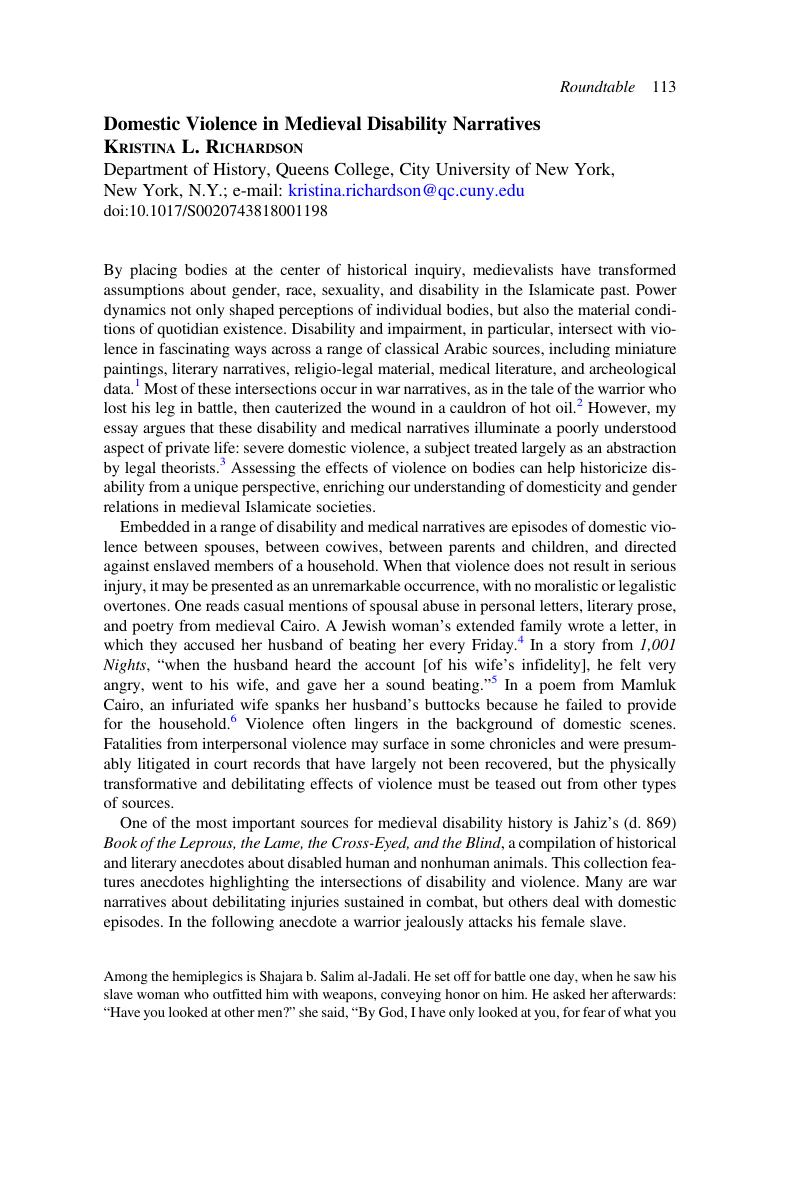No CrossRef data available.
Published online by Cambridge University Press: 14 December 2018

1 For an overview of primary sources, see Richardson, Kristina L., Difference and Disability in the Medieval Islamic World: Blighted Bodies (Edinburgh: Edinburgh University Press, 2012), 1–21Google Scholar.
2 Jahiz, , al-Bursan wa-l-ʿUrjan wa-l-ʿUmyan wa-l-Hulan, ed. al-Khawli, Muhammad Mursi (Cairo: Dar al-iʿtisam li-l-Tabʾ wa-l-Nashr, 1972), 238–39Google Scholar.
3 Shaikh, Saʿdiyya, “Exegetical Violence: Nushūz in Qurʾanic Gender Ideology,” Journal of Islamic Studies 17 (1997): 49–73Google Scholar.
4 Krakowski, Eve, Coming of Age in Medieval Egypt: Female Adolescence, Jewish Law, and Ordinary Culture (Princeton, N.J.: Princeton University Press, 2018), 288CrossRefGoogle Scholar.
5 Irwin, Robert, ed., Night & Horses & the Desert: An Anthology of Classical Arabic Literature (New York: Anchor Books, 1999), 371Google Scholar.
6 Daniyal, Ibn, al-Mukhtar min Shiʿr Ibn Daniyal, ed. Dulaymi, Muhammad Nayif (Mosul: n.p., 1979), 237–40Google Scholar.
7 Jahiz, al-Bursan, 279.
8 Zahrawi, al-Maqalah fi al-ʿAmal bi-l-Yad, XXX, bāb 2, faṣl 3; Spink, M. S. and Lewis, G. L., eds. and trans., Albucasis, On Surgery and Instruments (London: Wellcome Institute of the History of Medicine, 1973), 338–39Google Scholar, quoted in Savage-Smith, Emilie, “The Practice of Surgery in Islamic Lands: Myth and Reality,” Social History of Medicine 13 (2000): 311CrossRefGoogle Scholar.
9 Rosenthal, Franz, “On Suicide in Islam,” Journal of the American Oriental Society 66 (1946): 251–59CrossRefGoogle Scholar.
10 Jahiz, al-Bursan, 76–77.
11 Hazm, Ibn, Jamharat Ansab al-ʿArab, ed. al-Salam Muhammad Harun, ʿAbd (Cairo: Dar al-Maʿarif, 1999), 314Google Scholar.